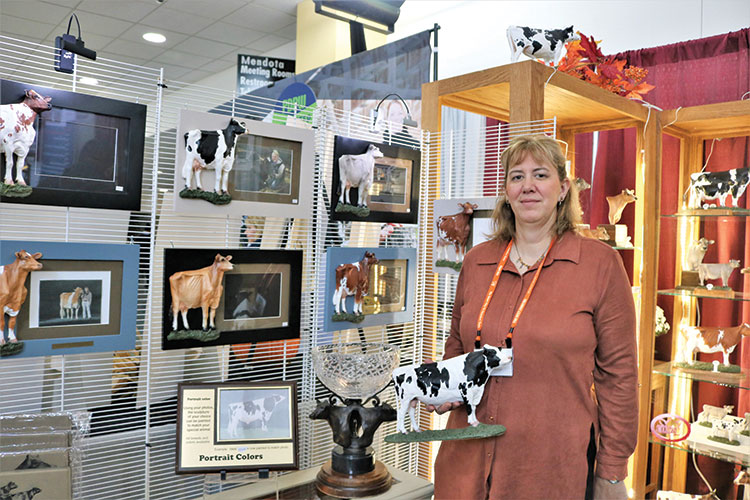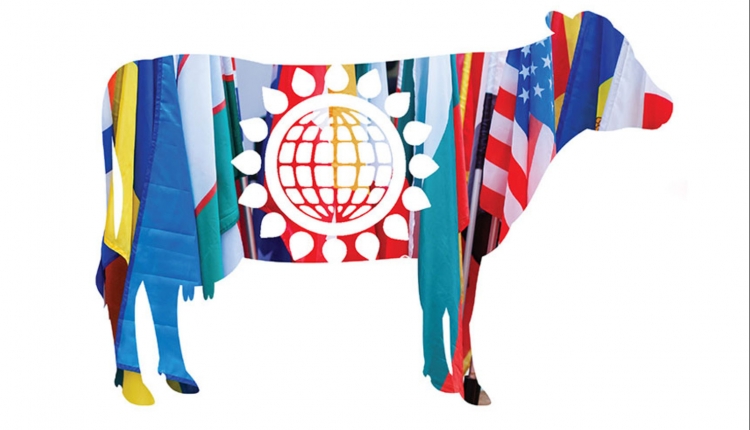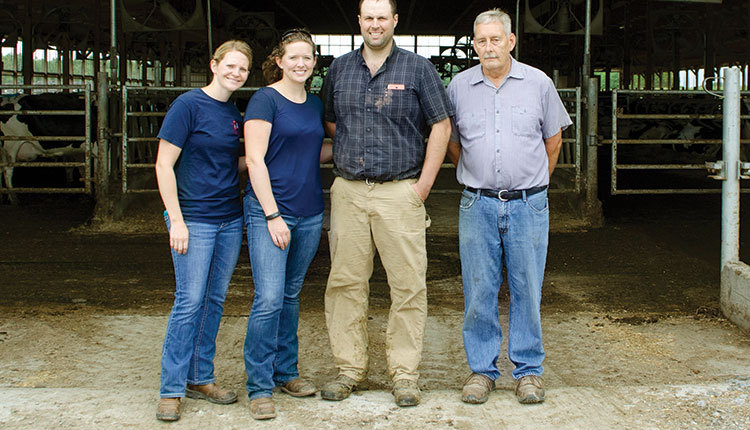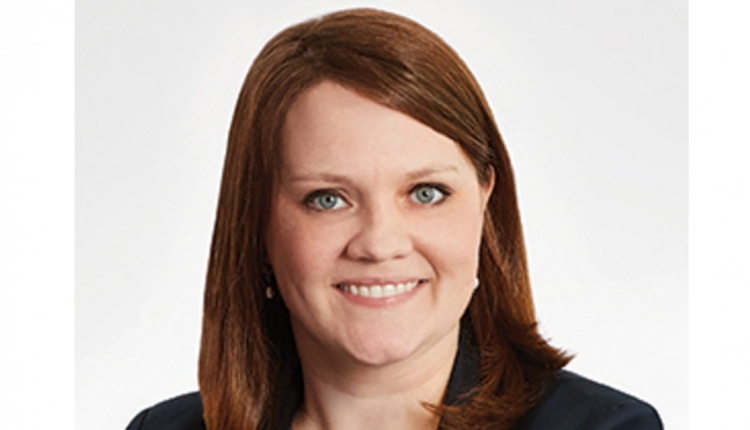
You’re going to have to make them on your own.” Carol Herden recalled her mother saying this to her about her habit of collecting Breyer model horses. Growing up on a farm, her mother told her that if she wanted model horses, she would have to make them on her own because the family couldn’t afford to purchase them.
After that, Herden said her mother gladly bought her clay and she started sculpting her own horses, and it wasn’t long until she was sculpting cows, too. These hand-sculpted figurines propelled Herden into her career as an artist.
“I spent probably 90 percent of my day in a corral,” Herden said of her childhood north of Cody, Wyo. Herden’s family has been in the cattle industry since the 1800s when her grandmother moved to Montana and developed a herd of polled Herefords. On her family’s ranch, they ran a commercial cow-calf operation and on the side raised sheep and quarter horses.
While cows have always been a central part of her life, she confessed that she only started sculpting them because there weren’t any to go along with the Breyer model horses.
“People were saying Breyer produces all these little horses but there are no cows to go with them, and that is how I got my little niche market with the cows,” said Herden. “I started producing these little sculptures of cows that were the size of the Breyer model horses.”
Through this discovery, Herden said she wasn’t trying to compete with Breyer. She saw the cows as an accessory to her favorite horse figurines. She also had a bigger goal in mind for her art, and as an artist, this led her to take a different route in how she produces and sells her work.
“Instead of going for a gallery presentation, I want everyone who sees my art to be able to afford it,” she said. That desire was a result of her own inability to purchase figurines because of a limited income from her family’s ranch. “I really didn’t deal with the elite, I dealt with farmers and ranchers; to me that was my customer.”
Her entire production was done right from her house in Wyoming. In 1989, Herden began casting her molds in what she calls cold cast porcelain instead of bronze. The move away from bronze was cheaper and meant she could make a more affordable product. That same year she officially named her business Carol’s Original Works.
Part of the dairy world
While she first produced horse and beef cattle sculptures, a move to the Midwest, and introduction to a well-known farm and ranch catalog store, gave Herden her start in dairy.
The catalog was Nasco, and at the time, they saw an opportunity with Herden to update all the ideal model cows for each of the six dairy breeds. Herden collaborated with each individual breed organization for those new sculptures, which debuted in 2001.
From there it grew. Those ideal models are really what helped her business take off in the dairy world, Herden explained.
“What’s fun about the dairy industry is they have had an ideal breed model since the 1960s, and people collect those. Beef and other livestock don’t really have an ideal model for their breeds,” she said.
The uptick interest from the dairy industry was so stark that after she finished the six dairy breed sculptures, her customer base became almost entirely dairy. Herden added that the dairy community taught her a lot about the individual characteristics and structure of each breed. She felt that because she wasn’t affiliated with any specific breed, she was free to create the different breed sculptures without any prejudice.
“She can capture dairy cattle in 3-D better than anyone in history,” remarked Les Hansen, a professor of dairy cattle genetics at the University of Minnesota. He uses his collection of dairy breed models to teach students in his dairy cattle genetics class.
“The first thing I do when I get to World Dairy Expo is go straight to her booth,” he said. Hansen shared that Herden has an innate sense when it comes to sculpting dairy cattle, even though she never grew up with them. “Each breed’s characteristics are independently portrayed, and her detail in getting every single proportion correct is phenomenal,” said Hansen, a long-time friend of Herden.
As dairy cattle genetics change overtime, Herden said she pays close attention to these proportions and aims to sculpt the most modern cow she can.
In 2001, cows she molded were sharper, narrower, and more of a show cow. Her recent breed sculptures for the Brown Swiss, Holstein, and Red and White Holstein Associations reflect a more common cow.
Herden explained, “They are a little broader, thicker, and a cow that everyone might have on their dairy.”
John Meyer, CEO of Holstein Association USA, pursued Herden to create the Ideal Holstein Cow and Bull from Bonnie Mohr’s paintings. He also worked with Herden while she created the Brown Swiss cow model.
“She did outstanding work on each breed model and was always extremely easy to work with,” shared Meyer. “I would recommend her to anyone who wants high-quality livestock sculptures.”
Not only have the cows changed, but Herden mentioned that she has improved her skills as well. “The first group of ideal breed models were an education for me, and I had to take a lot of direction from the breed committees. Now, I have a little better eye, a little better understanding, and use more of my own knowledge.”
Herden’s style is known as realism. She sculpts each animal to look as real-life or close to the actual animal as possible. Because of this, she has a unique way of taking feedback and critique of her work.
“When people look at something I’ve made and say, ‘That’s great,’ I instantly think, okay something is wrong,” explained Herden. “But, if someone comes in and says, ‘That hock is just a little too shallow’ or ‘The poll needs to be a little longer’ and start nitpicking the tiny details, to me, that means I am getting very close to what they are looking for.”
Herden utilizes these critiques to improve the infinite details on her sculptures. She explained that a person sees eight different views when looking at a sculpture. She must mold each view equally and as good as the last and next view.
The most commonly asked question is: “How long from start to finish does a sculpture take?” Her answer: “Twenty-five years and a day. The reason I say that is because since I have started sculpting, I have been honing my skills,” she said. In the 25 years of practicing her trade professionally, the fastest she has ever sculpted a figure was a day.
But, Herden said it depends on the project. “I have found that each sculpture presents a new challenge, depending on size, design, detail, and the people involved,” she added.
Herden and World Dairy Expo
For the last 10 years, Herden has primarily made livestock awards. She now sculpts sheep, goats, draft horses, and hogs, expanding her business into the whole world of livestock.
In 2016, at the 50th Expo, the large sculpture awards were brought back for Grand, Supreme, and Junior Champions. Herden has been asked to help create these for the last three years. This past Expo, she created all the class awards, which had a belt buckle design. Herden has always been a long-time sponsor of Junior awards at World Dairy Expo, and she felt it was an honor to be asked to create the champions’ awards.
Almost all her awards are done in collaboration with her husband, who has a degree in manufacturing and does all the woodworking in-house.
Although Herden prefers to be behind the scenes, she enjoys visiting with people who come to her booth every year. Over the years, she said she has established this beautiful customer base of friends and collectors.
“It’s like our own little Expo family,” she concluded.










